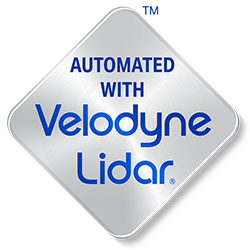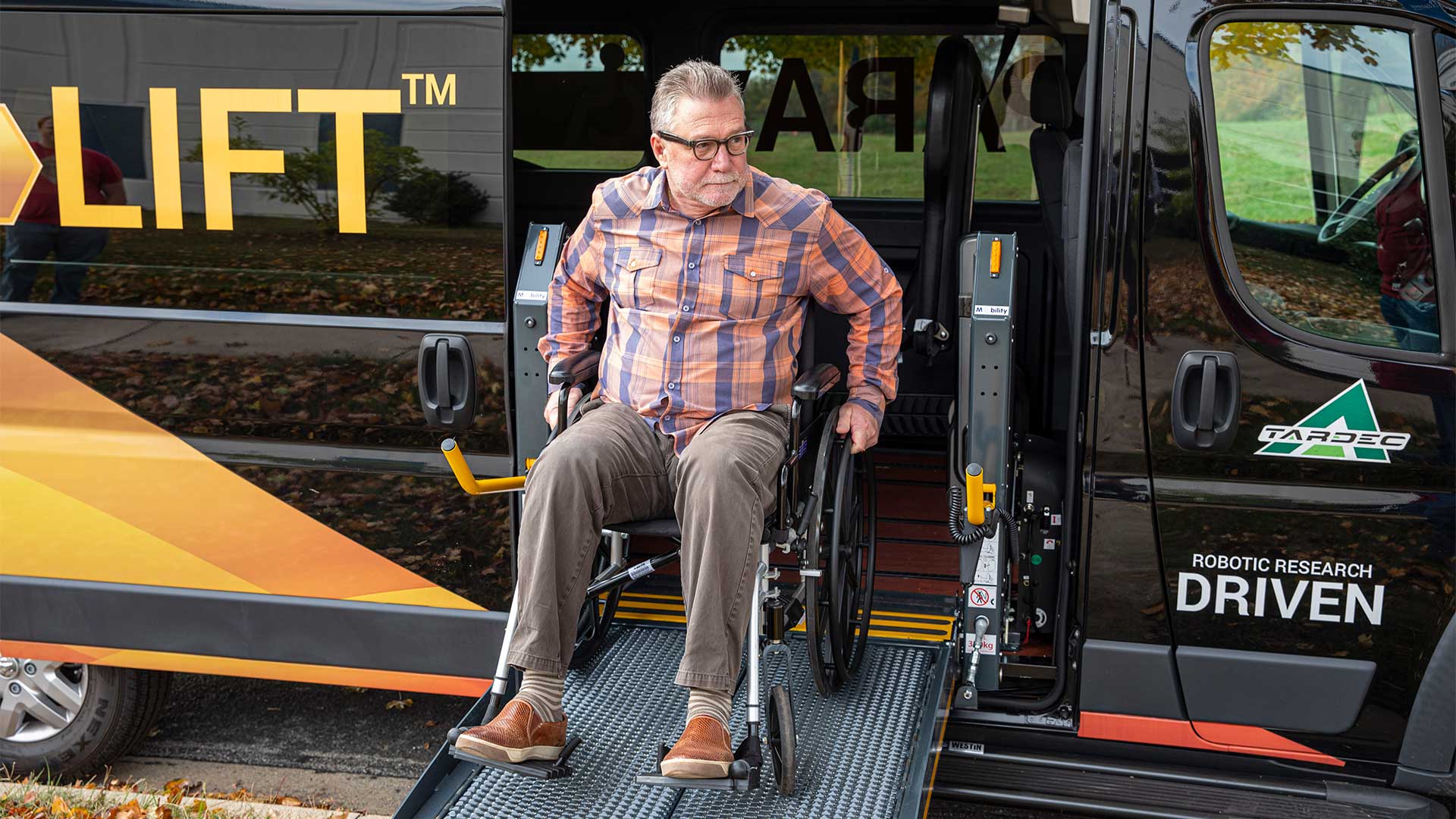
For nearly 20 years, Robotic Research has been a leading provider of autonomy and robotic technology to advance safety, security and effectiveness of transportation and mission critical operations. What began as a small team of former NIST scientists specializing in the development of solutions to meet the unique needs of our armed forces, Robotic Research is now driving the transformation of commercial and defense autonomous operations. Whether providing autonomous systems to the military to keep the warfighter safe, delivering unmanned transformable robots to extend the reach of Special Forces units or making commercial transportation more accessible and efficient, Robotic Research is leading this dynamic revolution in technology.
 Robotic Research is a member of the Automated with Velodyne™ program.
Robotic Research is a member of the Automated with Velodyne™ program.Three decades following the passage of the Americans with Disabilities Act (ADA), today there are still significant barriers to public transportation for many individuals with disabilities. The majority of wheelchair users riding non-emergency medical transport require assistance from the driver to load, secure and unload. In addition, special training and requirements for these shuttle drivers, combined with a national shortage of drivers, have created an even greater strain on available vehicles to support ADA public vehicle fleets. Also, mandates are being placed across the country to increase the accessibility of public transportation, in order to achieve greater independence and accessibility for those with disabilities. Addressing these challenges has driven the need for a new solution that could enable riders with disabilities to load their wheelchair, secure their seating, and unload in a totally autonomous manner.
ParaLift™, Robotic Research’s accessible vehicle technology featuring automated boarding and securement for wheelchair passengers, provides users complete independence in their loading and securement process. When designing the product, Robotic Research had to determine the best sensor suite to safely and reliably automate the process of onboarding and securing the rider’s wheelchair in the vehicle, ensuring proper detection above, below and around the door and lift. After comparing various sensor options, Velodyne’s Puck™ was selected based on its 3D point cloud accuracy, field of view, and ability to operate in wide range of environmental conditions. The point cloud generated by the lidar data provides critical input for detecting, classifying and predicting the motion of passengers on or around the lift.
No better example highlights the results of the solution than Robotic Research’s work with the Army at Fort Bragg. The Applied Robotics for Installations and Base Operations, or ARIBO, was launched to pilot autonomous shuttles that carry soldiers between the Warrior Transition Battalion barracks and Womack Army Medical Center. Robotic Research had the honor of utilizing their technology to help wounded warriors navigate their post and attend critical medical appointments. With over 160 soldiers assigned to Fort Bragg’s Warrior Transition Battalion, distances of a third-of-a-mile between barracks and the hospital posed a significant challenge to many soldiers. One of the soldiers that used the service was Spc. Sean-Michael Vail Horn, who at the time was still getting used to a new prosthetic right leg, and he was quoted as saying there’s little doubt it made his life easier. Robotic Research’s ADA-compliant ParaLift system is capable of autonomously loading and securing a wheelchair user in a shorter period – all while giving the wheelchair user control over the loading and securement experience. By automating the process using Velodyne’s advanced lidar technology, Robotic Research is reducing barriers to public transportation for individuals with disabilities.

One of the primary features of ParaLift™ is that it gives the wheelchair user more confidence in having a safe experience entering and existing a vehicle. This ensures greater personal independence. We are extremely proud to be collaborating on this important innovation with the great team at Velodyne, who share our commitment to advancing technology to help improve the lives of people throughout our communities.
For ParaLift™ to work effectively, we needed a superior sensor suite that would ensure the safety of passengers and those around them throughout the entire loading, securing and unloading process. The accuracy, range and visibility of the Velodyne Puck made it the natural choice.
We had the honor of developing ParaLift™ initially to support wounded warriors in need of transportation independence while in recovery at military rehabilitation centers, following their return home from Afghanistan and Iraq. We are thankful to have Velodyne’s Puck sensor to ensure that this solution is highly dependable, as we work to bring this technology to more throughout our communities.